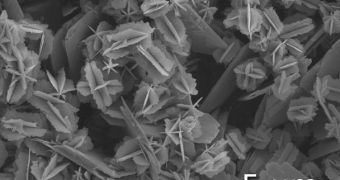In a finding that could revolutionize the fields of automotive design, computing and health care, researchers and engineers at the University of Florida have recently been able to ignite certain types of nanoparticles. They used weak lasers to get the job done, and say that the achievement bears considerable implications for nanotechnology and science in general. Details of the investigation appear in this week's advance online issue of the prestigious scientific publication Nature Nanotechnology.
In the experiments, the UF group used fullerenes as targets. These are ball-shaped carbon-based nanostructures, which are apparently sensitive to lasers no more intense than the ones used in standard laser pointer devices. The fullerenes used in this study were modified in very specific ways so that they become even more sensitive to the action of the photons. This class of particles is already being developed at full speed, as they have a broad range of potential applications, in fields ranging from industry to commercial and medial applications.
The research team featured experts Vijay Krishna, Nathanael Stevens, Ben Koopman and Brij Moudgil, all from UF. They explain that the creation of what they call “functionalized fullerenes” is a major milestone in researching all these new technologies. “The beauty of this is that it only requires a very low intensity laser,” explains Moudgil, who is a professor of materials science and engineering at the university. The scientist is also the director of the UF Engineering College Particle Engineering Research Center, the place where the new work was carried out. The lasers used for the investigation had a power output in the range of 500 milliwatts.
In one of the experiments, the team placed polyhyroxy fullerenes on a sheet of paper, and then used highly-precise lasers to write the letter “UF” on the substrate. They argue that demolition workers, for example, could in the near future be equipped with laser-activated exploding caps, which may eliminate the need for running miles of electrical wires throughout a building targeted for demolition. “Traditional bursting caps require a lot of energy to ignite – they use a hot tungsten filament. So, it is interesting that we can do it with just a low-powered laser,” says Particle Engineering Research Center postdoctoral associate, Nathanael Stevens.

 14 DAY TRIAL //
14 DAY TRIAL //